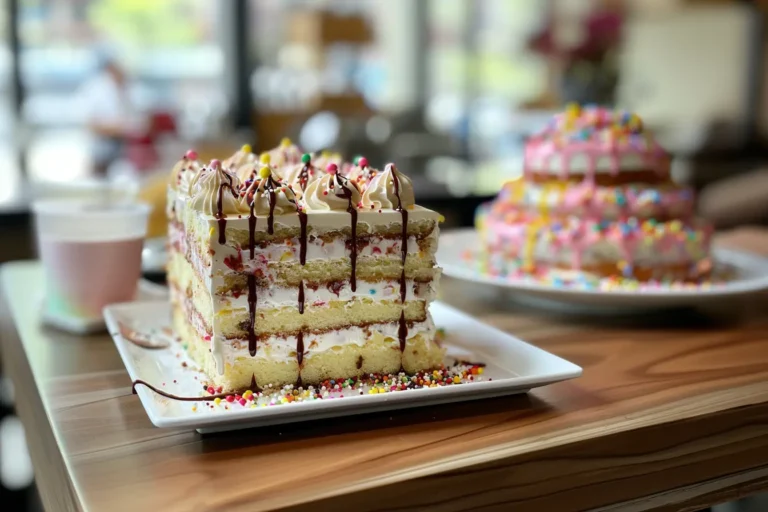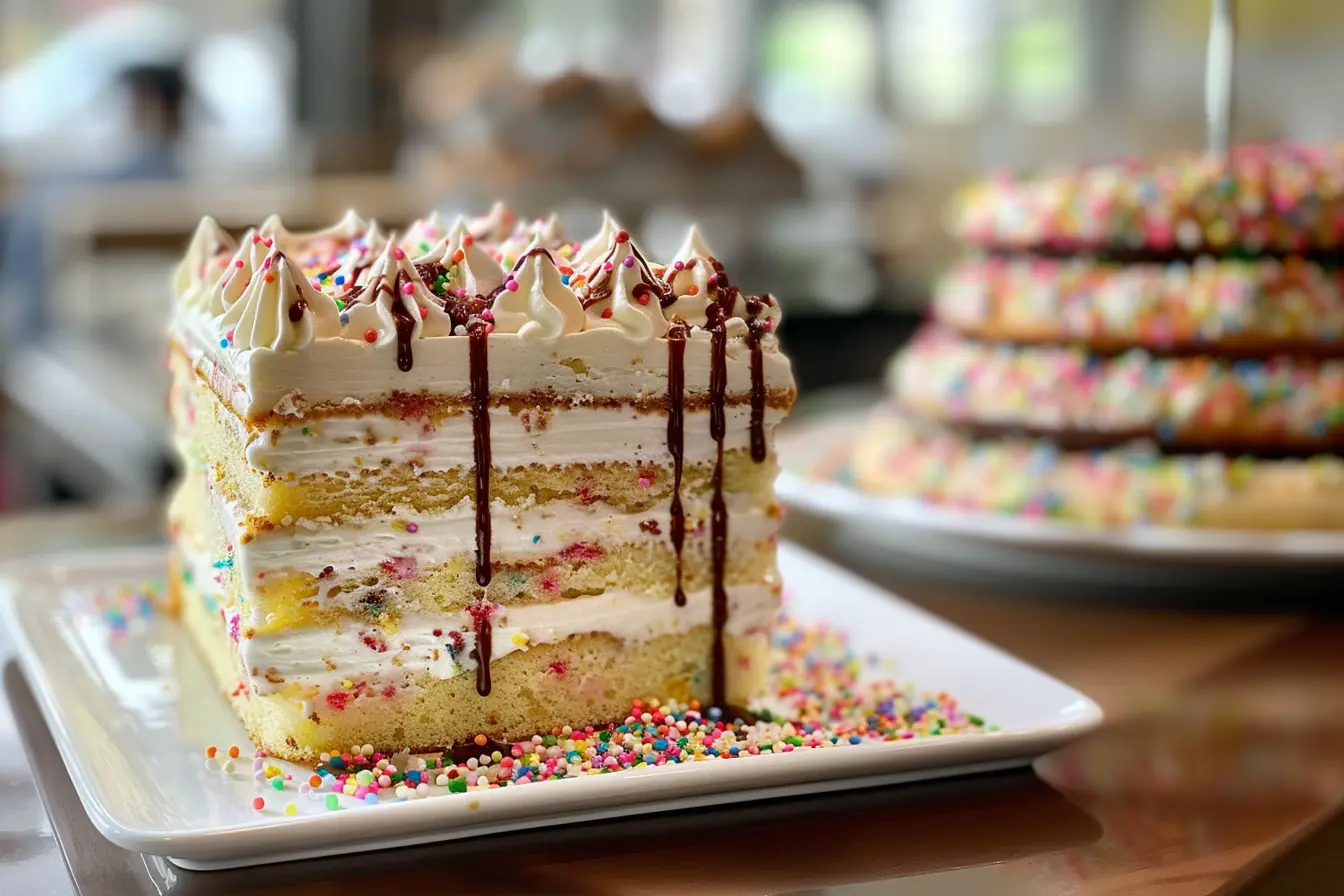Advanced Baking Techniques
Incorporating Modern Culinary Techniques
For those looking to elevate their buttercake, exploring modern culinary techniques can be rewarding. Techniques like sous-vide baking, where the cake is cooked slowly and evenly in a water bath, can result in incredibly moist cakes. Experimenting with flavor infusions, such as herb or spice-infused milk, can also add a unique twist to your standard recipe.
Learning from Professional Chefs
Many professional chefs offer workshops and online classes focused on baking. Participating in these sessions can provide you with insider tips and advanced techniques, from perfecting your crumb to mastering the art of decoration. This continuous learning will not only improve your skills but also inspire you to create more sophisticated desserts.
The Cultural Significance of Butter Cake
Butter Cake Around the World
Butter cake has variants in many cultures, each adding its local flavors and techniques. For instance, the Filipino mamon is a lighter, chiffon-like butter cake, while the Dutch boterkoek is denser and richer. Exploring these variations can provide a delightful insight into how a simple it can be adapted by different culinary traditions.
Celebratory Cakes and Traditions
In many cultures, butter cake is a celebratory food, featured in everything from birthday parties to weddings. Learning about the role of butter cake in these celebrations can add a layer of cultural appreciation and depth to your baking practices.
Gluten-Free and Vegan Variations
Adapting Recipes for Dietary Needs
For those with dietary restrictions, adapting a traditional butter cake to be gluten-free or vegan can be a delightful challenge. Substitute wheat flour with a gluten-free blend that includes xanthan gum to mimic the texture of gluten. For a vegan version, replace eggs with applesauce or mashed bananas, and use plant-based butter and milk. These changes can make the beloved butter cake accessible to everyone without compromising on taste.
Tips for Perfecting Alternative Cakes
Ensuring moistness and the right crumb texture in gluten-free and vegan cakes takes practice. Experimenting with different types of flour and binders, like flaxseed or chia seeds, can help in achieving the best results. Don’t be afraid to adjust the amounts slightly based on the batter’s consistency.
Enhancing Butter Cake with Natural Sweeteners and Flavors
Exploring Natural Sweeteners
In the quest for healthier baking alternatives, natural sweeteners provide an excellent option for reducing refined sugar in your cake. Ingredients like honey, maple syrup, and agave nectar can not only sweeten your cake but also add a layer of complex flavors. Each of these sweeteners brings its own unique taste and benefits, such as additional minerals and antioxidants.
Incorporating Organic and Natural Flavors
Enhancing your butter cake with organic and natural flavors can elevate the standard recipe to something extraordinary. Vanilla beans, citrus zest, and spices like cinnamon or nutmeg are perfect for adding depth and warmth to the cake. For a more adventurous twist, consider infusing your cake with lavender or rose water, which provide a floral subtlety that can transform a simple butter cake into a gourmet delight.
Hosting Butter Cake Baking Contests
Organizing Community Baking Events
Bring your community together by organizing a butter cake baking contest. Such events not only foster community spirit but also allow bakers to showcase their skills and creativity. Provide a basic butter cake recipe as a starting point, and encourage participants to add their unique twist.
Judging and Prizes
Setting up a panel of local chefs or baking enthusiasts as judges can add a professional touch to your event. Offer prizes for categories like “Best Traditional Cake,” “Most Creative Flavor,” and “Best Presentation.” This can inspire a friendly competition and make the event more exciting for everyone involved.
Butter Cake in Digital Media
Blogging About Butter Cake
If you’re passionate about baking, consider starting a blog focused on butter cakes. Share your recipes, tips, and variations. Blogging not only helps to document your baking journey but also connects you with like-minded individuals who share a passion for butter cake.
Leveraging Social Media
Create engaging content for platforms like Instagram, Pinterest, and YouTube. Post high-quality photos of your butter cakes, step-by-step video tutorials, and baking tips. Using social media effectively can help you reach a broader audience, receive instant feedback, and even collaborate with other bakers and brands.

Sustainable Baking Practices
Explore the importance of using sustainably sourced ingredients in your baking. This includes opting for organic flour, free-range eggs, and fair-trade sugar. Discuss how these choices not only impact the quality and taste of your butter cake but also contribute to environmental conservation and ethical business practices.
Reducing Waste in Baking
Provide tips on minimizing waste when baking. This could include creative ways to use leftover ingredients or suggesting reusable alternatives to disposable baking supplies. Encouraging sustainable practices among your readers can make baking a more eco-friendly activity.
Common Mistakes and Troubleshooting
Troubleshooting Common Issues
Baking a butter cake can sometimes be challenging, especially for beginners. Common issues include cakes that are too dense, dry, or unevenly baked. To prevent density, ensure that your butter and sugar are well-creamed—this incorporates air and gives the cake its light texture. If your cake is dry, check that you’re measuring ingredients accurately; too much flour can absorb moisture needed for a soft cake. Lastly, ensure your oven is properly calibrated to avoid uneven baking.
FAQs
Can I make butter cake with whole wheat flour?
Yes, but expect a denser texture. For a lighter variant, mix half whole wheat and half all-purpose flour.
Why did my cake sink in the middle?
This often happens if the cake is underbaked or if too much leavening agent is used. Make sure to test the cake’s doneness before removing it from the oven.



